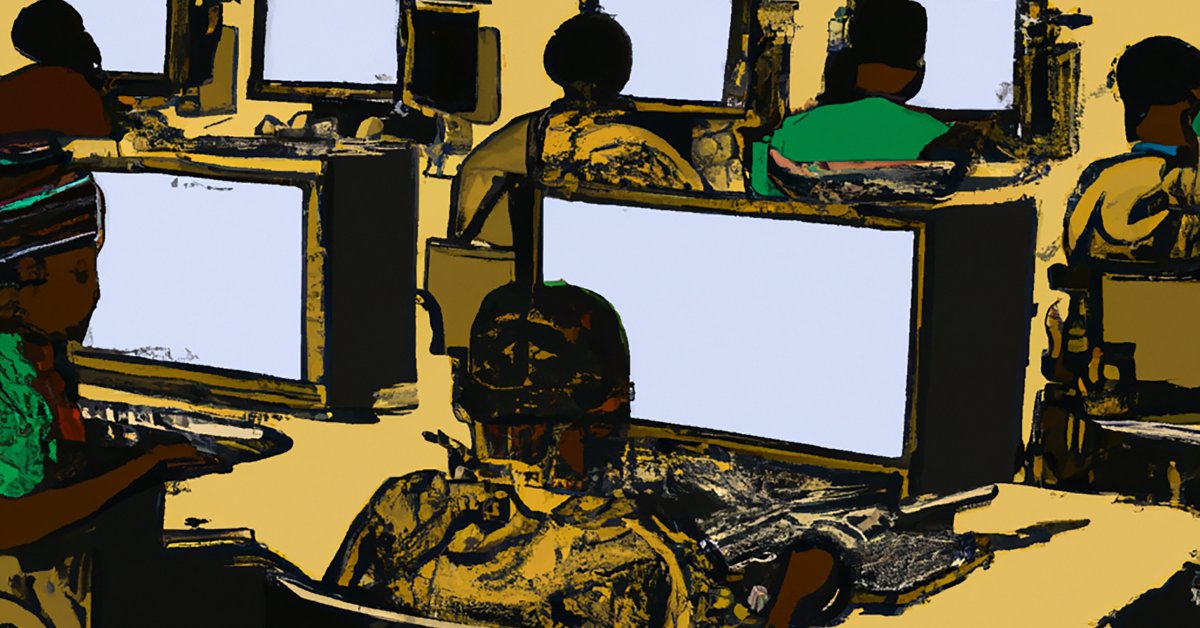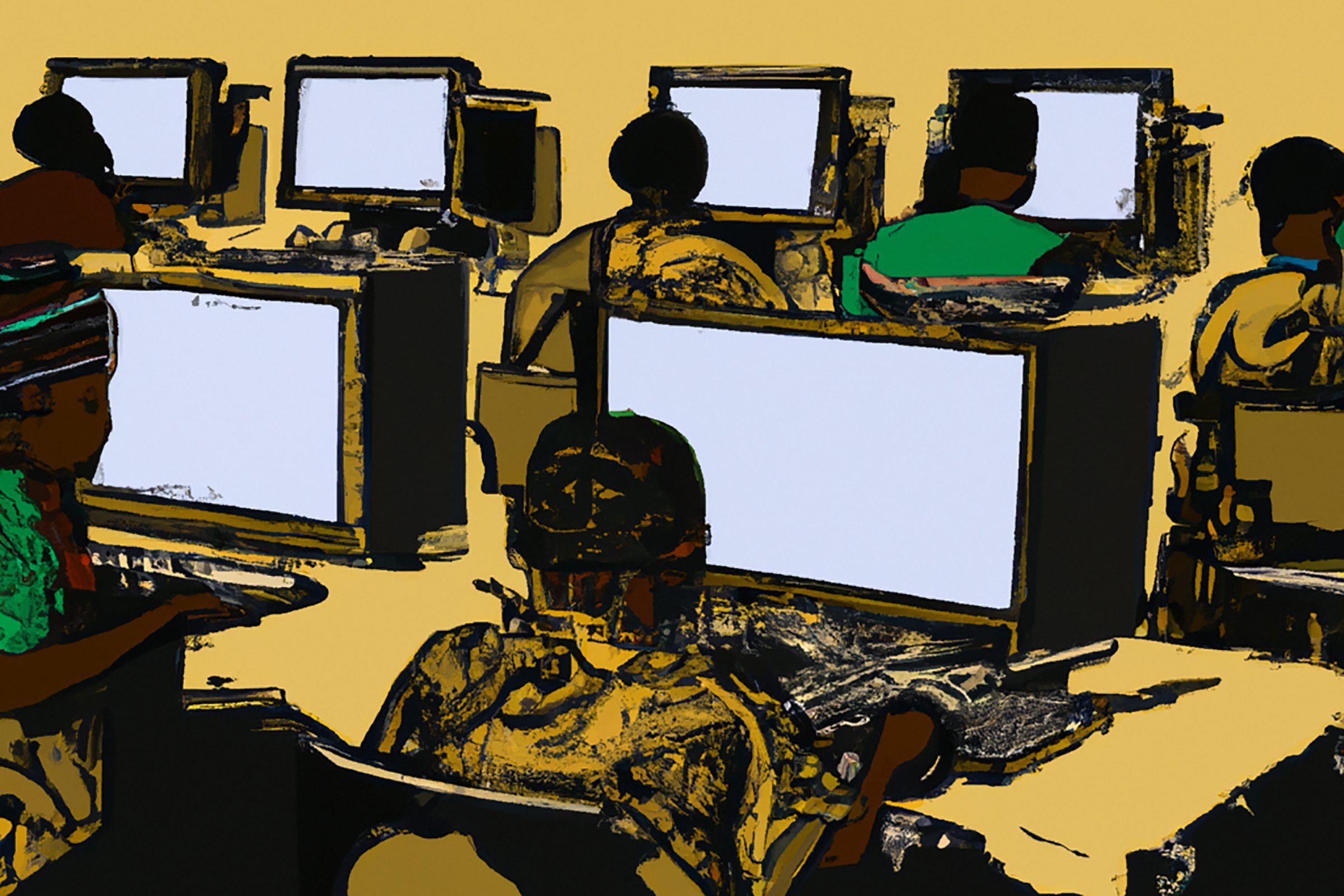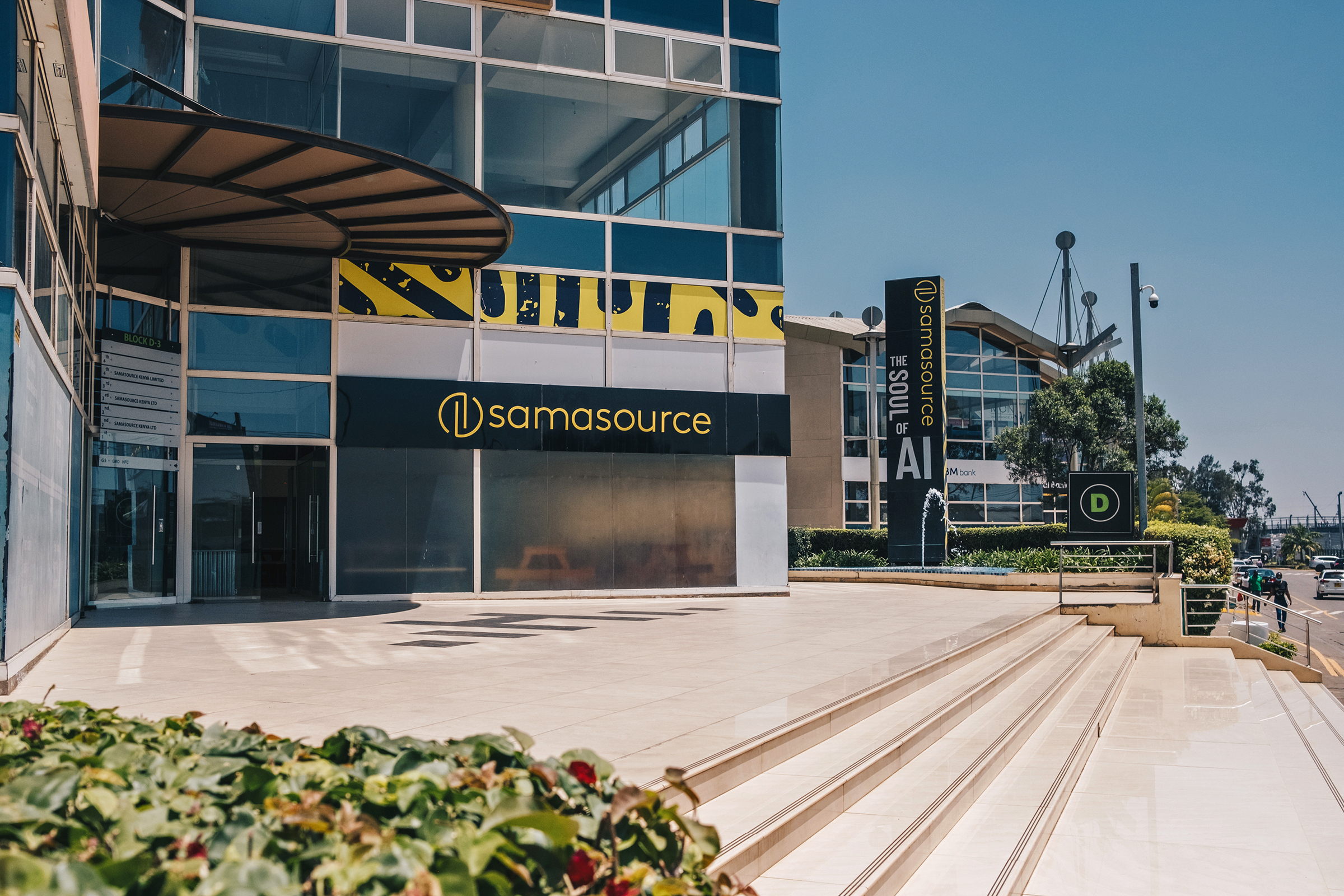
Exclusive: The $2 Per Hour Workers Who Made ChatGPT Safer
A TIME investigation reveals the difficult conditions faced by the workers who made ChatGPT possible

This image was generated by OpenAI's image-generation software, Dall-E 2. The prompt was: "A seemingly endless view of African workers at desks in front of computer screens in a printmaking style." TIME does not typically use AI-generated art to illustrate its stories, but chose to in this instance in order to draw attention to the power of OpenAI's technology and shed light on the labor that makes it possible.
Image generated by Dall-E 2/OpenAI
BY BILLY PERRIGO
JANUARY 18, 2023 7:00 AM EST
Content warning: this story contains descriptions of sexual abuse
ChatGPT was hailed as one 2022’s most impressive technological innovations upon its release last November. The powerful artificial intelligence (AI) chatbot can generate text on almost any topic or theme, from a Shakespearean sonnet reimagined in the style of Megan Thee Stallion, to complex mathematical theorems described in language a 5 year old can understand. Within a week, it had more than a million users.
ChatGPT’s creator, OpenAI, is now reportedly in talks with investors to raise funds at a $29 billion valuation, including a potential $10 billion investment by Microsoft. That would make OpenAI, which was founded in San Francisco in 2015 with the aim of building superintelligent machines, one of the world’s most valuable AI companies.
But the success story is not one of Silicon Valley genius alone. In its quest to make ChatGPT less toxic, OpenAI used outsourced Kenyan laborers earning less than $2 per hour, a TIME investigation has found.
The work was vital for OpenAI. ChatGPT’s predecessor, GPT-3, had already shown an impressive ability to string sentences together. But it was a difficult sell, as the app was also prone to blurting out violent, sexist and racist remarks. This is because the AI had been trained on hundreds of billions of words scraped from the internet—a vast repository of human language. That huge training dataset was the reason for GPT-3’s impressive linguistic capabilities, but was also perhaps its biggest curse. Since parts of the internet are replete with toxicity and bias, there was no easy way of purging those sections of the training data. Even a team of hundreds of humans would have taken decades to trawl through the enormous dataset manually. It was only by building an additional AI-powered safety mechanism that OpenAI would be able to rein in that harm, producing a chatbot suitable for everyday use.
Read More: AI Chatbots Are Getting Better. But an Interview With ChatGPT Reveals Their Limits
To build that safety system, OpenAI took a leaf out of the playbook of social media companies like Facebook, who had already shown it was possible to build AIs that could detect toxic language like hate speech to help remove it from their platforms. The premise was simple: feed an AI with labeled examples of violence, hate speech, and sexual abuse, and that tool could learn to detect those forms of toxicity in the wild. That detector would be built into ChatGPT to check whether it was echoing the toxicity of its training data, and filter it out before it ever reached the user. It could also help scrub toxic text from the training datasets of future AI models.
To get those labels, OpenAI sent tens of thousands of snippets of text to an outsourcing firm in Kenya, beginning in November 2021. Much of that text appeared to have been pulled from the darkest recesses of the internet. Some of it described situations in graphic detail like child sexual abuse, bestiality, murder, suicide, torture, self harm, and incest.
OpenAI’s outsourcing partner in Kenya was Sama, a San Francisco-based firm that employs workers in Kenya, Uganda and India to label data for Silicon Valley clients like Google, Meta and Microsoft. Sama markets itself as an “ethical AI” company and claims to have helped lift more than 50,000 people out of poverty.

Sama's office in Nairobi, Kenya, on Feb. 10, 2022.
Khadija Farah for TIME
The data labelers employed by Sama on behalf of OpenAI were paid a take-home wage of between around $1.32 and $2 per hour depending on seniority and performance. For this story, TIME reviewed hundreds of pages of internal Sama and OpenAI documents, including workers’ payslips, and interviewed four Sama employees who worked on the project. All the employees spoke on condition of anonymity out of concern for their livelihoods.
The story of the workers who made ChatGPT possible offers a glimpse into the conditions in this little-known part of the AI industry, which nevertheless plays an essential role in the effort to make AI systems safe for public consumption. “Despite the foundational role played by these data enrichment professionals, a growing body of research reveals the precarious working conditions these workers face,” says the Partnership on AI, a coalition of AI organizations to which OpenAI belongs. “This may be the result of efforts to hide AI’s dependence on this large labor force when celebrating the efficiency gains of technology. Out of sight is also out of mind.” (OpenAI does not disclose the names of the outsourcers it partners with, and it is not clear whether OpenAI worked with other data labeling firms in addition to Sama on this project.)
In a statement, an OpenAI spokesperson confirmed that Sama employees in Kenya contributed to a tool it was building to detect toxic content, which was eventually built into ChatGPT. The statement also said that this work contributed to efforts to remove toxic data from the training datasets of tools like ChatGPT. “Our mission is to ensure artificial general intelligence benefits all of humanity, and we work hard to build safe and useful AI systems that limit bias and harmful content,” the spokesperson said. “Classifying and filtering harmful [text and images] is a necessary step in minimizing the amount of violent and sexual content included in training data and creating tools that can detect harmful content.”
Even as the wider tech economy slows down amid anticipation of a downturn, investors are racing to pour billions of dollars into “generative AI,” the sector of the tech industry of which OpenAI is the undisputed leader. Computer-generated text, images, video, and audio will transform the way countless industries do business, the most bullish investors believe, boosting efficiency everywhere from the creative arts, to law, to computer programming. But the working conditions of data labelers reveal a darker part of that picture: that for all its glamor, AI often relies on hidden human labor in the Global South that can often be damaging and exploitative. These invisible workers remain on the margins even as their work contributes to billion-dollar industries.
One Sama worker tasked with reading and labeling text for OpenAI told TIME he suffered from recurring visions after reading a graphic description of a man having sex with a dog in the presence of a young child. “That was torture,” he said. “You will read a number of statements like that all through the week. By the time it gets to Friday, you are disturbed from thinking through that picture.” The work’s traumatic nature eventually led Sama to cancel all its work for OpenAI in February 2022, eight months earlier than planned.



